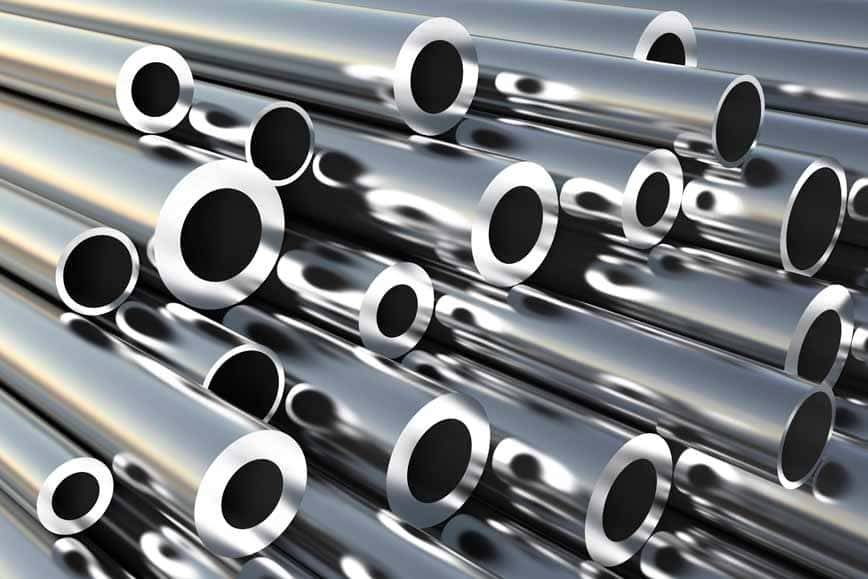Aluminum Products
Discover infinite possibilities
As a leading aluminum supplier and manufacturer, Alfiniti offers a wide assortment of aluminum products for many industries. We are industry leaders in cold-drawn tubing, but also offer other types of aluminum products such as extrusion. We use our 9″ diameter extrusion press mainly to extrude bloom (drawn tube raw material) and we supplement what we extrude by buying bloom from other extruders.
Aluminum offers a wide variety of benefits: lightweight, high in strength-to-weight, corrosion resistant, excellent thermal and electrical conductors, sustainability, and more.
Contact us with any questions
Cold-Drawn Precision Tubing
Aluminum Extrusions
Aluminum Welded Tube
What’s best for my application? (FAQS)
In porthole, metal is forced around a mandrel that matches the ID of the tube you want to extrude. The mandrel needs webs to hold it in place, and the metal must flow around them. That separates the metal as it extrudes, so a second die forces those sections back together. That forms a longitudinal seam running the length of the extrusion. This weld seam is somewhat weaker than the base metal.
Seamless tubes insert a mandrel into the rear of a billet and basically punch a hole through the billet until it’s very close to the opening in the die. The material flows through the gap between the mandrel and die, emerging with both internal and external dimensions fixed and without any seams. This process is slower and generates more scrap so it is more expensive. The tolerance on the wall thickness cannot be held as tightly as they are during the porthole extrusion process.If the application involves internal pressure or is in a life critical application, choose seamless tubing. If neither of those apply, however and if the highest priority is keeping the cost down, choose porthole.
All drawn tubing starts as extruded tubing or pipe and a drawing step is added, making extruded tubing the cheaper option. However, the drawing process produces tighter tolerances, can produce thinner walls, and increases the strength of the tube. If your application calls for tight tolerances, enhanced surface appearance, thin walls( down to .025” thickness), incorporates robotic or automated processing where repeatability is important, machining, or requires significant bending, the added cost of the drawing operation may well result in lower overall costs.
The terms often are used interchangeably but there are key differences. Pipes are generally used to transport fluids or gases, and the capacity is determined by the inner diameter of the pipe (ID). Tubes are often used in structural applications where the strength is determined by the outer diameter (OD) and wall thickness of the tube. Pipes are always round, but tubes can be round, square, rectangular, or other symmetrical shapes. In general, piping is larger than tubing but there is significant overlap.
The chart below shows the differences between all combinations of extruded, drawn, porthole, and seamless.
Downloadable Resources
Production Capabilities
Download this PDF for Production Capabilities Information
Questions about capabilities?
Standards Catalog
Download these PDFs for information on our Standards
Questions about standards?
Schedule Pipe Sizes
Download these PDFs for Schedule Pipe Sizes
Schedule Pipe Sizes PDF (English)
Schedule Pipe Sizes PDF (French)
Questions about processes?
Dimensional Ranges
Download these PDFs for our Dimensional Ranges
Drawn 6061 Tube and Pipe PDF
Drawn 6063 Tube and Pipe PDF
Drawn 1100 – 3003 Tube and Pipe PDF
Questions about ranges?
Production Capabilities
Download this PDF for Production Capabilities Information: Production Capability PDF
Standards Catalog
Download these PDFs for information on our Standards
- Standards Catalog (Full catalog) PDF
- Drawn Round Tube Standards PDF
- Drawn Round Telescoping Tube Standards PDF
- Extruded Round Tube Standards PDF
- Schedule Pipe Standards PDF
- Rectangular & Round Bar Standards PDF
- Rectangular Tubing Standards PDF
- Square Tubing Standards PDF
- Conduit Tubing Standards PDF
Schedule Pipe Sizes
Download these PDFs for Schedule Pipe Sizes
Dimensional Ranges
Download these PDFs for our Dimensional Ranges
